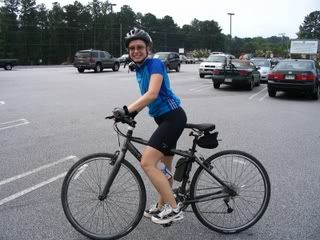Further Notes on Communism
So, in an attempt to take advantage of my time here in Prague and to patron all the various tourist-trap attractions it has to offer, Bethany, my semi-roommate (I currently sleep in her kitchen), and I went to the Museum of Communism to spend some free time we didn’t have. We went with fairly low expectations following the previous day’s visit to the National Museum, which, although free on that particular Monday, I felt had maliciously robbed me of my abovementioned non-existent free time. I have never seen so many unlabelled and apparently unimportant rocks in my entire life.
The Communist museum, on the other hand, was quite expensive even though there were very few actual artifacts (not even a rock) ; mostly readings and blown-up photographs next to artificial models or the occasional Communist officer uniform. Feeling a bit ripped off that I wasn’t getting the true Communist experience that I’d been seeking (perhaps my low expectations had been heightened with the entrance price), we settled down to watch a looping documentary film that we had already caught snippets of echoing from different corners of the museum.
Expecting another general account of what we had already read (which demanded some clarification since I’d been trying to read everything in Czech or Spanish to feel like I was actually accomplishing something by being there), instead we were surprised by an immediate onslaught of video clips of various Communist invasions, demonstrations, rallies, beatings, attacks, and violence following the Russian takeover. Prague was in ruins as tanks barreled through Old Town, barely missing mothers and children as they darted across the street; Prague natives peacefully protested in front of barricades of Communist soldiers, which ran after them with bats and mowed them down with fire hoses; plain-clothed police beat individuals in now peaceful neighborhoods where I occasionally enjoy a peaceful stroll or a warm cup of coffee; young men burned themselves in protest in Wenceslas Square in a desperate attempt to provoke the support and sympathy of the people to the cause against the foreign invaders.
It was the first time I had seen real videos of what happened to the people that surrounded me, and the faces and figures on the television screen were instantly cemented in my mind. These were my friends, my colleagues, my students’ parents, a nation of people that once had passion against a common enemy, a passion and a hope for freedom. And they were robbed of it, and robbed of so much more – and it couldn’t be explained in any museum, not entirely. No history book could ever create the clear mental picture that the video images provided, along with a year’s worth of observations, stories, and commentaries from Czech friends.
It’s so easy to forget, as I walk amongst the restored alleys and rebuilt squares of golden Prague today, that it all happened just a few years ago, within my own lifetime. But you can see it in the faces of the people who survived it, on the faces of the people in the video clips that remind you today that it was very, very real. And though the Czechs don’t speak about it much now, their silent protest against the history they would rather forget but that still visibly plagues them even decades after the fall of Communism, at least you know that you also can superficially experience the suffering of the Czech people at the Museum of Communism, all for only 140 Crowns.


0 Comments:
Post a Comment
<< Home